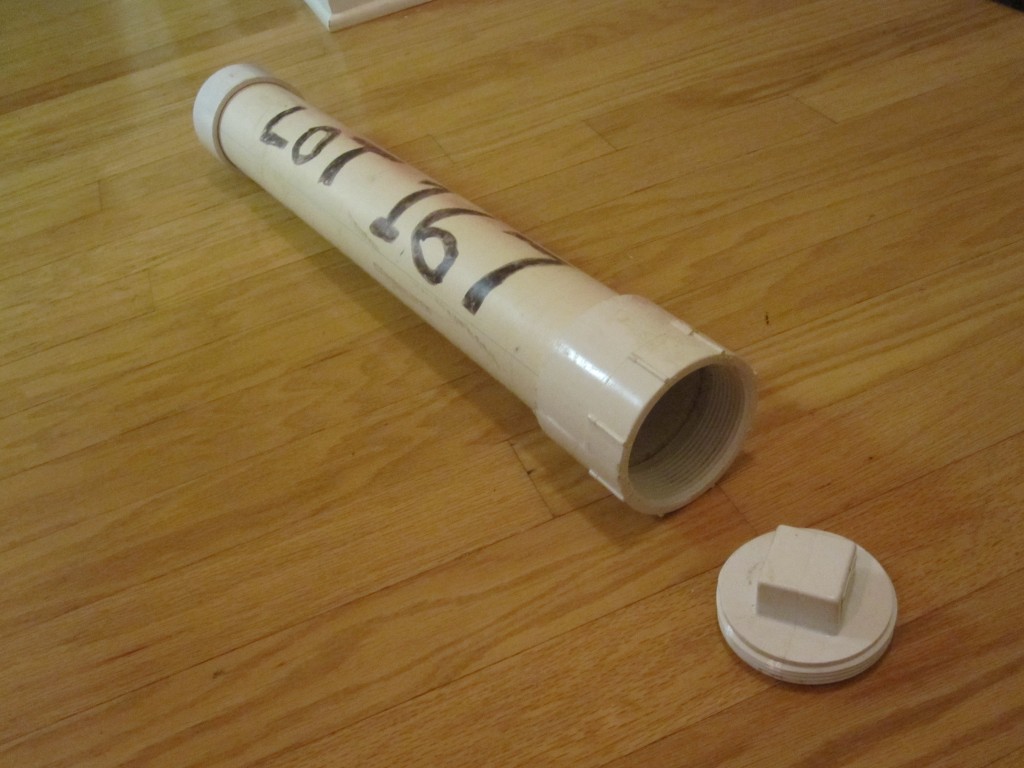Home Plans: Tips For Storing on Your New Home Site.
1 Comment | Posted by armchairbuilder in Great Products, Owner-Builder, Save Money
Most local building departments require you to have a set of architectural home plans for your building project on your construction site at all times. This allows them to look up items they may question during a building inspection. Another reason to keep a set of home plans on site is for your subcontractors. Rather than give out a $6 set of home plans to each trade at the start of your project, you can save some money by leaving a set on site at all times. This will prevent the trades from calling you when they forget to bring their copy…and believe me, they will. How do you keep the plans dry on site before the house has a roof? There are several inexpensive ways to keep your home plans safe and dry on your new owner-builder construction site. Let’s go over a few of your options.
PVC Plan Tube: One of the least expensive ways to keep your home plans dry on your construction site is to put together a plan tube. Cut a 4″ PVC pipe into a 26″ long piece (typical 1/4 scale home plans are 24″ long when rolled up). Then glue a solid cap onto one end and a screw cap (cleanout) to the other. Your plumber will typically give you scrap material to put this together at no charge. In the water-tight tube, you can place your permit, home plans, engineered plot plan, and any other instructions you have for your subcontractor that day. If your building department wants the permit displayed, you can place it in a clear vinyl sheet protector found at most office product stores. Just make sure you tape up the open end to prevent moisture from getting your permit wet. You can place a 4×4 post in the ground in front of your water service shutoff (a.k.a. buffalo box) in your front yard. Not only will this protect your water shutoff valve from delivery trucks but it will also provide a surface to mount your permit and home plan tube.
Manufactured Job Box There are several companies that make weather resistant protective boxes to put important documents into on your job site. Doc-Box is one example. These work well however they are somewhat expensive. They range in price from $40 to $60.
Kitchen Window All of my subcontractors know that in the kitchen of every home I build or remodel is a window that has any information they might need taped to it after the roof goes on. This would include…
- All product information including appliance specifications, fans, flooring, hardware,…etc.
- All paint & stain color selections
- Special installation instructions (i.e. electrical layouts, cable and phone locations)
- Contact information: Best way to get ahold of you or your project manager and other subcontractors
- Map to closest hospital with route highlighted (in case of emergency)
- Kitchen cabinet layout (if it changed from the initial plan…which it normally does)
- Home Plans
By having your home plans and specification details on your job site, you will avoid unnecessary calls to you throughout the day and will help keep your project on schedule. Your subcontractors will only wait around so long for you to call them back if they have a question. Once they pack up their tools, you have lost a day of production. If your subcontractors can consult the plans on their own, you will avoid these unnecessary delays. Having your home plans and specifications on site will also help minimize mistakes. There are some trades that will make assumptions and continue working even if they don’t have an answer to a question. This is fine if they make the right assumption. Don’t give them the opportunity…make sure all pertinent information to your project is accessible on your job site.
If your budget is tight like all of my projects…you can’t argue with the price of the homemade PVC plan tube! Do you have a special way you store your plans on site? We would like to hear about it.



[…] Plan: It’s a good idea to keep a copy of your house plan on site for contractors and inspectors to review. If you want a cheap way to keep them dry, check out this article, Home Plans: Tips for Storing on Your New Home Site. […]